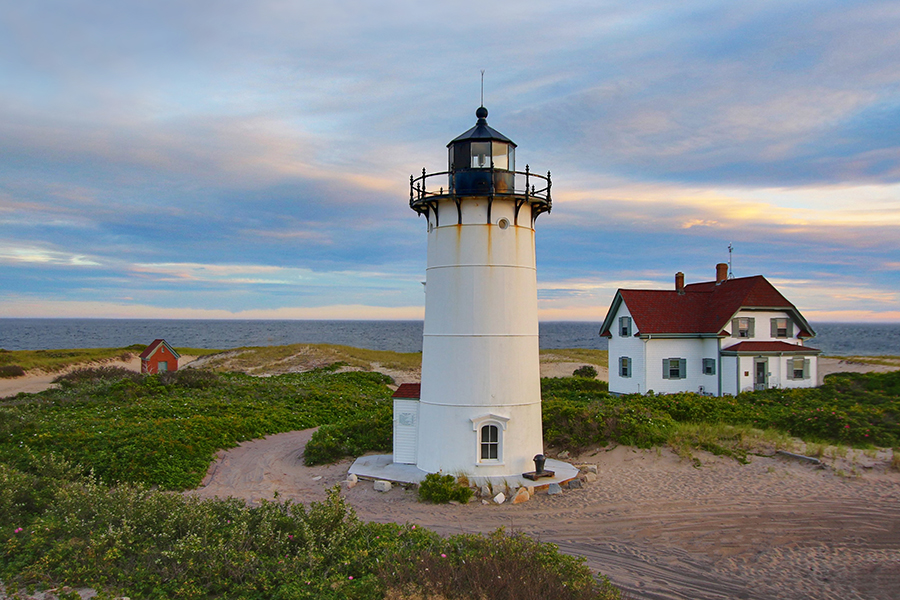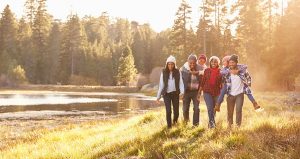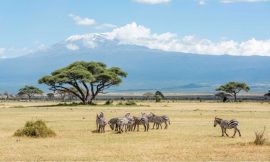Family camping trips are a fun way to spend quality time between kids and parents. The crush of the crowds, the cry of the kids when you refuse to board the Giant Demon Twister Ride for the fifth time. You could spend another summer fighting with your family (and 200,000 others) at an overpriced mega-amusement park. Or you could seek real thrills–in the great outdoors.
Consider camping, No, you don’t have to trek through the arctic tundra with a Volkswagen-size backpack. Modern campsites offer amenities that make a foray into the forest far more comfortable. A camping trip provides you and your kids with quality time together for talking, doing fun outdoorsy stuff, and learning skills. And all this at half what you’d spend on a prepackaged vacation. The cost of a six-night trip for four ranges from about $100 to $1,000, depending on whether you bring your own tent or rent a cabin,
To be camping officially, you have to sleep outside.
Generally, camping is done at a campsite–either a privately owned commercial site or a national, state or local park. Most KOA sites also have Kamping Kabins, wood structures with lockable doors, wood-frame beds and mattresses, as well as buildings called Kamping Cottages, with kitchenettes and bathrooms. Additionally, most commercial sites offer RV hookups: electricity and water for recreational vehicles. (This is the least rugged route–you pull up, plugin, and start playing.)
Commercial sites are usually located near national parks or other tourist attractions (shopping areas, historic sites, and even amusement parks). Some, however, have enough natural attractions to make camp itself the destination. Beauty, privacy, and price vary by site and company. Typically, tent sites cost about $15 per night, cabins range from $45 to $100 and RV sites run $20 to $30. Check the KOA Web site (www.KOA.com) for photos and details. Look under “camping” on any Internet search engine for countless other smaller commercial campgrounds.
Family Camping Trips: Campgrounds
National-park campgrounds offer similar services in some of the most spectacular places on the planet. There is an awesome range of scenery and wildlife within the national park system–from towering red rocks and mile-long lakes to herds of wild buffalo. On the downside, camping in a national park can require lots of paperwork and planning. But the experience is worth it.
For starters, you have to reserve early. Grounds in popular parks, such as Yellowstone, Yosemite, and the Grand Canyon, are usually booked by spring for the summer months. You can lodge at a commercial site nearby and make day trips into the park. Read about every park and see photos on the park service Web site at www.nps.gov.
Many states also publish guides to campsites within their borders listing locations, sizes, amenities, activities offered and so on. This enables you to choose just how much you want to rough it.
Family Camping Trips: What To Pack.
Start with your room–tent, poles, stakes, sleeping bags, and inflatable air mattresses, or sheets and pillows for a cabin. Add basic room and kitchen supplies–a lantern, a cooler, folding chairs, flashlights, a bottle opener, pans, a kettle, marshmallow skewers (it’s not camping without s’ mores!), a drink pitcher, plastic containers, and serving and eating utensils. And don’t forget the fun stuff. When you make reservations, ask the campground owner or park ranger about area activities. In addition to balls, Frisbees, games, books, paper and crayons, binoculars, swimsuits and a camera, you’ll want destination-specific gear, such as fishing poles, snowshoes, snorkeling masks, or a field guide to North American flowers. And bring a standard first-aid kit, adding sunscreen, insect repellent, and anything necessary for dangers common to your area.
The last thing to pack before setting out on your family camping trip–the right attitude. Camping should be a pleasure, not a chore. Planning the trip as a family should be a fun, bonding experience. Just keep in mind: Don’t take on more than you or your children can handle. If you do your research, prepare well, and choose wisely, this can be the beginning of a beautiful new family tradition.
There are 379 national parks in the national park system and hundreds of state and local parks. Here are a few top picks:

1. Cape Cod National Sea Shore, Massachusetts
With nearly 50,000 acres of shoreline jutting out into the Atlantic Ocean, this park has six beaches, eleven nature trails, three paved bike trails, freshwater ponds, historic lighthouses, lifesaving stations, Cape Cod-style houses and some of the best seafood on the East Coast. You can camp in a variety of privately operated campgrounds within the park and at nearby Nickerson State Park in Brewster.
2. Death Valley, California
This eerie landscape is awash with wildflowers in the spring. Death Valley National Park has more than 3.3 million acres of rare desert wildlife, undisturbed wilderness, and historical sites. The land changes dramatically–from the 11,049-foot Telescope Peak to the 282-foot Badwater area, the lowest point in the Western Hemisphere. There are more than 350 miles of unpaved and four-wheel-drive roads, thousands of hiking trails, talks, evening programs, and costumed living-history tours. Camp at one of a handful of grounds and lodges within the park.
3. Everglades National Park, Florida
Lush, wet and dripping with vines, Everglades National Park is the largest remaining subtropical wilderness in the continental United States. Many parts are accessible only by boat. You’ll find scenic watery expanses, open Everglades prairies, mangrove forests, and alligators and crocodiles existing side by side (unheard of anywhere else in the world). This World Heritage Site has hiking, biking, canoeing trails, boat tours, tram tours, and freshwater and saltwater fishing. There are two campgrounds in the park, and the Flamingo Lodge has 24 cottages and 103 rooms.
4. Great Smoky Mountain National Park, North Carolina, and Tennessee
This 800-square-mile mountain park is known for incredible scenic vistas and remnants of American pioneer culture. The Smoky Mountains area is chock-full of the wacky touristy things kids love–fudge shops, shallow swimming creeks, and historic farm buildings, as well as hiking, fishing, horseback riding, and fabulous photographic opportunities. Camp at one of ten campgrounds within the park or at LeConte Lodge, accessible only by foot or on horseback, at 6,593 feet.
5. Isle Royale, Michigan
Wolves and moose, the wild North Woods forest, clear waters and the rugged Lake Superior characterize this 45-mile-long wilderness archipelago. Take a wildlife hike or cruise and see historic lighthouses. Explore abandoned copper mines, visit an old commercial fishery or troll along with one of Isle Royale’s reefs. You can choose from 36 campgrounds.

6. Olympic National Park, Washington
This park has three distinct ecosystems: glacier-capped mountains, 60 miles of Pacific coast, and huge stands of the old-growth and temperate rain forest. It also has eight kinds of plants and five kinds of animals that can’t be found anywhere else in the world. Head here for hiking trails, snowshoe walks, nature photography, kayaking, and canoeing. You and the family can take your pick of 16 campgrounds, two lodges, and two resorts.
7. Rocky Mountain National Park, Colorado
This 415-square-mile park is the perfect place to explore the grandeur of the Rocky Mountains. In the summer, fields of wildflowers blanket the rugged terrain. Cross the Continental Divide and see great gray peaks towering more than 14,000 feet overhead. Go hiking and biking, skiing, snowshoeing, and wildlife- and bird-watching. Choose from five campgrounds, two on reservations.
Family Camping Trips Tips
1. Make reservations.
This is especially important during peak season–which generally includes the summer months and in the southern states, winter months.
2. Beware of dangers.
Read about your park on the national park Web site to learn about any poisonous plants, snakes or dangerous wildlife and how to handle them.
3. Prepare for bad weather.
Pack the appropriate clothing for cold nights and rain, especially if you’re going to the mountains and northern states.

4. Don’t pitch your tent under a tree.
After a rainstorm stops, trees drip. Make sure you’re on a site with drainage to avoid sleeping in a puddle.
5. Hang food. Bears around?
Hang food high in airtight containers. Do not keep it in the tent with you.
6. Consider your kids.
Children of any age can go–depending on the children and the destination. If your kids hate being outdoors, they’re not going to love camping. Make sure to choose a location with enough safe activities to keep them entertained.
7. Don’t overdo it.
If this is your first nature trip, plan to do less than you think you can handle–maybe two or three nights.
Learn about Health, Wealth, Relationships, Investing, Technology and Have Fun in the Process.
Check us out on our Socials




